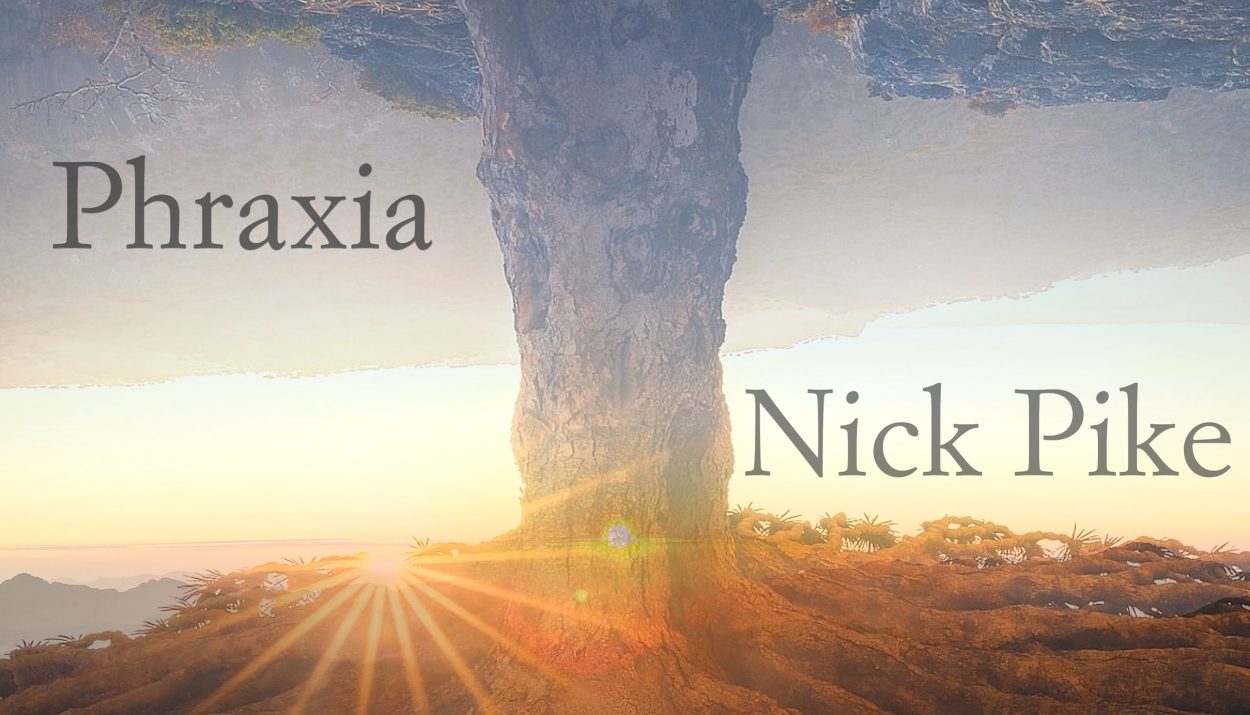If there’s a composer whose music feels like a tender conversation between the past and the future, London-based Nick Pike is that rare one. An award-winning multi-instrumentalist, producer, and educator, Nick crafts instrumental soundscapes that feel at once intimate and vast. With a career spanning Film, TV, theatre, podcasts, and concert halls worldwide, Pike’s musical vision transcends genre, time, and place, inviting listeners into a world where melody, emotion, and atmosphere reign supreme.
His third studio album, “Phraxia,” follows the evocative paths of 2024’s “Norastoria,” a fusion of piano, strings, and electronics — and the soothing sleep piano collection Evergreen. Here, Nick deepens his explorations, weaving solo piano brilliance with layered, synth-driven textures that highlight his jazz-inflected neoclassical style with graceful fluidity. Phraxia is an album not just to listen to, but to feel — a tapestry of sound that paints moods ranging from reflective tranquility to energized wonder. Let’s journey through the dream terrain of Phraxia.
The album opens with a gentle shimmer, “Whispertide” as solo piano lines ripple like moonlit waves, evoking quiet movement and introspection. Pike’s delicate touch is immediately evident; he allows space to breathe between notes, conjuring the intimacy of Erik Satie but with a modern sense of drift. A soft wash of ambient textures rises just below the surface, making this a perfect threshold into the album’s contemplative world.
In “Abaluna,” Pike introduces slightly more assertive chord structures, with flickers of jazz harmony dancing beneath the neoclassical framework. The piece begins with a clear rhythmic motif, before unraveling into swirling left-hand arpeggios and fleeting melodic phrases in the upper register. Synth layers enter subtly—never overshadowing the piano, but offering a glimmer of otherworldliness. This piece is one of the album’s more exploratory moments, hinting at emotional unrest beneath compositional grace.
The centerpiece and namesake of the album, “Phraxia” is a rich tapestry of textures and moods. Electronic pulses complement the piano in rhythmic synchronicity, forming a dialogue between tradition and innovation. There’s a cinematic scope here—an unfolding arc that moves from soft, introspective beginnings to bold, chordal climaxes. Pike’s control over dynamics and tension is masterful, giving “Phraxia” a narrative flow that feels both architectural and deeply human.
Named after the Māori word for love, “Aroha” feels like an embrace. With a slower tempo and emotionally tender phrasing, it’s one of the most heartfelt compositions on the record. The piano carries a melody that seems to search and settle simultaneously, supported by understated string-like synthesizer pads. It’s a moment of stillness and gratitude—a sonic expression of vulnerability wrapped in warmth.
“Deepward Glow” is where Pike leans into the ambient-jazz fusion space, echoing artists like Nils Frahm or even Ryuichi Sakamoto’s more reflective pieces. Lush, sustained tones underpin a hypnotic piano motif. The textures feel subterranean—cool, slow-burning, immersive. The use of electronic ambience here is especially effective, creating an enveloping glow that matches the track’s title.
Moving on, “Für Beethoven” is not an imitation, but rather a reimagining. Pike pays homage to the classical giant with a track that draws on formal elegance while injecting subtle syncopations and jazz-leaning harmonic choices. The piano work here is intricate, with a noble yet questioning tone. It’s as if Beethoven is invited into the modern world—his spirit held tenderly within Pike’s contemporary language.
“Vangise” piece dances in odd time signatures, folding in a gentle funk rhythm underneath the classical piano—a standout example of Pike’s genre-blending expertise. Synth bass and brushed percussive elements flirt with the melody without overpowering it. There’s an understated playfulness here, a flirtation between structure and spontaneity. This is like walking through a digital forest, leaves of sound glinting in the light.
Named after the optical phenomenon of bioluminescent sea glow, “Mareel” glistens with sparkling piano motifs that echo and fade like reflections on water. Synthesizer textures shimmer like plankton beneath the surface. The production is breathtakingly crisp, with every note suspended in luminous clarity. One of the album’s most transportive moments, “Mareel” invites awe and reflection.
“Minavra” is Pike’s most rhythmically complex offering. Syncopated piano rhythms and angular harmonies build tension, while an undercurrent of electronic glitches and textures pushes the piece forward. The groove is infectious, even as it skirts around predictability. It’s a fascinating blend of mathematical precision and emotive performance—a statement piece that showcases Pike’s technical brilliance.
The closing piece, “Maramor” is a gentle goodbye. The piano is warm and slow, unfurling like a lullaby or a sunset. Ambient textures rise like a soft exhale, and there’s a beautiful sense of closure. “Maramor” circles back to the album’s early motifs, completing the arc with grace. It leaves the listener reflective, perhaps changed.
In conclusion, Nick Pike is more than a composer; he’s a sound-weaver, a guide through invisible landscapes. With “Phraxia,” he doesn’t just present ten instrumental tracks; he offers a constellation of emotions, textures, and inner worlds. It’s an album of remarkable depth and polish, where every piano keystroke carries intention and every synth pulse whispers a story. His jazz inclinations, classical precision, and ambient imagination converge into a work that is as thoughtful as it is beautiful.
If you crave music that strikes beyond the surface—music that breathes, reflects, and glows—Nick Pike’s “Phraxia” is an invitation. Accept it, and you’ll find yourself returning to its light, again and again.
Listen to the “Phraxia” album on Spotify
Follow Nick Pike here for more information






